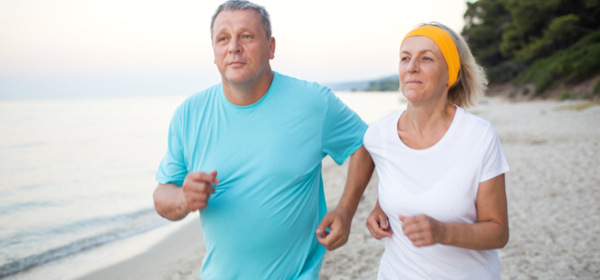As you get older, you lose bone mass and bone strength. Over a lifetime, women can lose between 30 and 50 per cent of bone mass while men can lose between 20 and 30 per cent.
Poor bone mass increases the likelihood of fractures in high-risk sites such as the hip, spine and wrist. A bone mineral density scan or dual energy X-ray absorptiometry (DEXA) can provide information about bone strength and the risk of fractures.
Weight-bearing exercise can reduce and even stall the loss of bone mass. While diet (including calcium and vitamin D) is crucial, it has little effect on bone mass without an appropriate exercise program.
Weight-bearing exercises can be classified as any exercise performed while on your feet or in a standing position. These exercises are beneficial as your muscles and bones work against gravity, resulting in improved bone density and muscle strength.
Exercises could include walking, jogging, stair climbing, dancing, gardening and particular types of resistance exercises such as squats or lunges.
Which form of weight-bearing exercise you choose will vary between individuals. Factors that should be considered include current exercise levels or tolerance, extent of bone loss and current physical and medical health.
Your GP or allied health professional will be able to guide your decision. For example, if you have been diagnosed with low bone mass (osteopenia) or osteoporosis around the spine, caution should be taken with exercises that involve repetitive twisting of the spine or high-impact exercises.
Likewise, other medical history such as arthritis or degenerative changes must be considered when choosing correct weight-bearing exercises in order to avoid exacerbating other symptoms.
Choosing lower-impact weight-bearing exercises such as walking or dancing could be of particular benefit for anyone suffering from arthritis of the knee or hip.
Correct technique can also dramatically reduce the likelihood of exacerbating arthritic joints.
Squatting is a fantastic weight-bearing exercise and, when performed correctly, can strengthen arthritic knees or hips. Calf raises are another great weight-bearing exercise that don’t impact on arthritic knees or hips. Both calf raises and squats can be done anywhere and don’t require any equipment.
How to do a basic squat
Stand tall with your feet at hip width. Your hips, knees, and toes should all be facing forward. Bend your knees and extend your buttocks backward as if you are going to sit back into a chair. Make sure you keep your knees behind your toes and your weight in your heels. Rise back up and repeat. If balance is an issue, always have a support within reach.
How to do a calf raise
Rest your hands against a wall or a sturdy object for balance. Raise your heels a few centimetres off the floor or above the edge of the step so that you’re on your tiptoes. Hold the position for a moment, then lower your heels back to the floor or below the step, feeling a stretch in your calf muscles.
Try building up to between 15 and 20 squats or calf raises at a time. Rest briefly for one to two minutes. When repeated four to five times, this is a great starting point for a weight-bearing exercise routine.
Most importantly, whatever weight-bearing exercises you choose, they need to be enjoyable.
They should be performed at least two to three times per week. The duration will vary from person to person but a good guideline would be to aim for at least 20 to 30 minutes each time. These don’t have to be done continuously but can be performed cumulatively over the day.
Do you do weight-bearing exercises? What other physical activity do you do regularly?
Jason Lee APAM
B. Physiotherapy
Malvern East Physiotherapy
Disclaimer: This article contains general information about health issues and is not advice. For health advice, consult your medical practitioner or health professional.
Jason is happy to answer any questions you may have. Simply send an email to newsletters@yourlifechoices.com.au
Related articles:
Are these scans useful?
Life without codeine
Does your bum sag?

